Service Alert
July 1 - Canada Day
CELA will be closed on Tuesday, July 1st for Canada Day. Our office will reopen and our Contact Centre services will resume on Wednesday, July 2nd. Enjoy your holiday!
CELA will be closed on Tuesday, July 1st for Canada Day. Our office will reopen and our Contact Centre services will resume on Wednesday, July 2nd. Enjoy your holiday!
Showing 1 - 20 of 3648 items

This book examines the development of the Russian radical right in exile between 1918 and 1945. The radical right, which…
represented one of the most prominent groups of Russian political exiles, both continued its pre-revolutionary activities and at the same time was inspired by new ideologies of the interwar period, primarily fascism.Offering a comprehensive, comparative analysis of the political activities, and political thinking of individual groups of the radical right, this book shows the groups' political connections and radical right activities. Groups included monarchists, new groups founded by the younger generation of political, for example, the so-called Mladorossy (Young Russians), Fascists, Russian military émigrés, and the Russian Orthodox Church Abroad. The biographical chapter examines leading ideologist of the monarchist right-wing emigration, philosopher Ivan Alexandrovich Ilyin. This book demonstrates that the radical right represented one of the prominent political currents of Russian emigration.This book is especially important in that contemporary right-wing radicalism in Russia draws on the thinking of these right-wing exiles very extensively. It will be of interest to researchers in modern Russian history, Russian emigration, and right-wing radicalism as well as 20th-century history.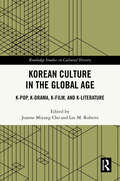
By Joanne Miyang Cho, Lee M. Roberts. 2025
Since the late 1990s, South Korean cultural products such as pop music, TV drama, and film have shaped the country’s…
image around the world. This book explores these three internationally best-known media of the Korean Wave global phenomenon, along with a less commonly featured aspect, K-literature.Iconic images of South Korea today include stylish music groups like BTS and Blackpink, appealing dramas, and a range of films and digital comics (manhwa). Alongside associations with glitz and glamor are darker impressions: continuing political division, malaise over a war that never really ended. Korean Culture in the Global Age focuses on these and other facets of South Korea’s constantly changing international image to show how it has come to command worldwide attention. In recent years, readers in a growing number of languages have discovered the talent of South Korean authors through the efforts of countless translators. Showing developments in and occasional connections between themes in K-pop, K-drama, K-film, and K-literature, the book provides a more comprehensive view of contemporary South Korean culture.This volume will interest researchers and students of Korean Studies, Asian Studies, Asian American Studies, popular music, film studies, migration and diaspora studies, and world literature.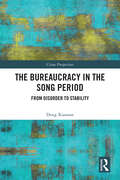
By Deng Xiaonan. 2025
The bureaucracy has always played a crucial role in the exercise of political power, and how officials are appointed is…
directly related to the effectiveness of state governance. This book conducts a clear and structured study of the complex personnel management system in imperial China.It examines the main features of the official appointment system in the Song dynasty (960–1279), such as the separation of official ranks and their duties, the agencies and regulations for appointing officials, the merit rating system, the coexistence of 'seniority' and 'functional rank' in the recruitment and selection of officials, and other important procedures, including the recommendation system, the evaluation for reassignment system, and the system of appointments to commissions. Focusing on both the institutional regulations and their practical implementation and effectiveness, the book reveals many contradictions and coping mechanisms in the Song dynasty's personnel management system.This book will appeal to scholars and students of Song dynasty history, personnel administration, and civil service.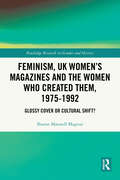
This book analyses how reproductive rights and sexual freedoms, the political sphere, women’s role in the workplace and sexual violence…
were positioned and depicted by three magazines with very different demographics: Spare Rib, Cosmopolitan and Woman’s Own. The 1970s and 1980s were a time of enormous cultural shifts for women: The rise of the feminist Women’s Liberation Movement, ground-breaking equality legislation and greater reproductive freedoms impacted on most women’s lives in a plethora of ways. However, until now there has been little attention to how those changes were disseminated to and framed within women’s media. This is because most media of the period were run by men, for men and focused on men’s lives. However, within women’s magazines, the changes in women’s lives and feminism itself were framed, debated and contested. This volume features unique interviews with the influential women who produced the magazines (Spare Rib, Cosmopolitan and Woman’s Own) and who give insights into the national and international events, ideologies and constraints which impacted on their content creation.This book will be of great value to contemporary historians, students of gender and cultural studies, media scholars and those who are interested in finding out how feminism influenced their parents’ and their own generation.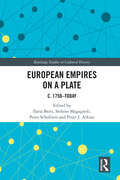
By Peter Scholliers, Peter J. Atkins, Ilaria Berti, Stefano Magagnoli. 2025
This book uses food to explore the uneven and multifaceted encounters between European imperial societies and their colonies, examining the…
cultural, social, political and economic forces behind European empires.Food is a key focus of current transdisciplinary and border research, and these chapters uncover hidden aspects of imperial dynamics and the search for food in European expansion. Containing contributions from a mix of established food historians and young researchers in the field, the collection utilizes a range of sources including colonial government records, trademark and patent records, cookery books, agronomic and botanical treaties, television shows, newspaper and magazine articles and advertisements. While the book discusses empires’ influence on the colonies and their foodways, it also reveals inter-imperial connections and interdependence by highlighting the effect of colonial foods on the metropoles.European Empires on a Plate is a valuable resource for scholars in the fields of food history, food studies and food culture, as well as social and cultural historians.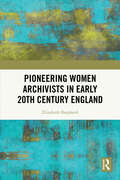
By Elizabeth Shepherd. 2025
This book tells the story of four remarkable women who laid the foundations of English local archives in the early…
20th century: Ethel Stokes, Lilian Redstone, Catherine Jamison and Joan Wake. The book analyses their professional historical work, alongside their educational, social and family contexts, to reveal their place in the history of the archival profession.Although this book focuses on the history of archives in early 20th century England and on the contribution of women, it will also be of interest to anyone interested in the history of archives internationally. The book makes a new contribution to the growing literature about the role of women in the development of modern professions, such as medicine, nursing and psychoanalysis, and of disciplines including history, philosophy, literary and musical composition. It brings out the hidden voices of women in archival history which has previously been the history of great men, institutional archives, government commissions and reports and professional infrastructure. It also tells the story of women’s struggle for independence and education, of the ways in which women established independent cultural, social and family networks and shows how these women used their scholarly skills to earn a living.The book will be of interest to archivists and records professionals in England and internationally; to students who are studying archives, records management, library science, cultural studies and related disciplines; and to historians in cognate fields such as feminist history, cultural studies, literary studies and biography.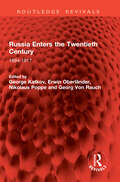
By George Katkov, Erwin Oberländer, Nikolaus Poppe, Georg Von Rauch. 1970
First published in 1971 (in its English translation), Russia Enters the Twentieth Century provides a broad and detailed survey of…
Russia during the two decades leading up to the revolution. An international team of scholars examines each significant aspect of Russian life to create a comprehensive portrait of Russia under Nicholas II (1894–1917), free from the myths imposed by historians who, on both sides, have tended to interpret it through the lens of the revolution that followed, rather than studying it objectively as a distinct period. This work serves as an important historical reference for students and researchers of Russian history.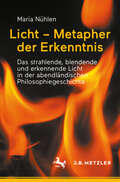
Das Licht als Metapher der Erkenntnis gehört zur abendländischen Tradition der Bildsprache allgemein, insbesondere aber in der Philosophie. Die Erfahrung…
eines neuen Gedankens, einer neuen Idee oder einer neuen Erkenntnis haben wir, vielleicht mangels eigener sprachlicher Begrifflichkeit, für genau diesen geistigen Vorgang in eine Metapher übertragen, indem wir mit der Vorstellung arbeiten, die sinnliche Wahrnehmung der physischen Erscheinung des Lichts sei vergleichbar mit der geistigen Wahrnehmung eines neuen Gedankens. Durch das Licht sehen wir die Welt und die Dinge in ihr, durch den Geist erkennen wir Weltzusammenhänge, Arten des Seins, Wahrheiten, Kategorien, Strukturen, Hierarchien, was auch immer. Das Hauptanliegen dieses Buches ist es, die Lichtmetapher in ihrer philosophisch-historischen Bedeutung – exemplarisch - aufzuarbeiten, indem es die Philosophiegeschichte nach der Verwendung der Lichtmetapher durchforstet. Wer (1) hat wozu (2) mit welcher philosophischen Aussage (3) die Lichtmetapher benutzt? Das Buch regt so zum Nachdenken über diese Aussagen an und den Diskurs über die Lichtmetapher und die Intelligibilität des Denkens.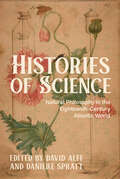
By David Alff, Danielle Spratt. 2025
Spreading the news of scientific breakthroughs in the eighteenth centuryHistories of Science shows how different forms of media communicated scientific…
breakthroughs during the long eighteenth century, bringing together eighteen humanities scholars to discuss the representation, reception, and application of natural philosophy in the Atlantic world. In particular, the authors focus on descriptions of scientific discoveries in popular print, with essays on topics as varied as placebo pills, irrigation systems, and navigational technology. And while each contributor advances a discrete argument, the collection coheres in its shared questions of methodology, historicity, and ethics. Histories of Science expands our record of the past, our understanding of the present, and our ability to imagine the future.
This book presents a historical synthesis of colonial relations between Brazil and Portugal, illuminating the projects that the statesmen of…
the period formulated for the rich Portuguese territory in America—at first as a colonial domain, then as a potential independent country.Drawing on primary sources and historiographical dialogues with classic and current works, the book follows a chronological thread from Marquis of Pombal’s reforms to Brazilian independence. The work is framed by global geopolitics at the height of the liberal revolutions that led to the collapse of the Ancient Regime and the colonial system. Liberal revolutions, the Atlantic context, Napoleonic wars, and disputes for hegemony on the South American continent provide further background to the making of the Portuguese–American slaveholding class, the guarantor of the independence process. While the volume focuses on a remote period of history, its analysis of agendas for the nation offers the opportunity for dialogue with current concerns in Brazil.Shaping Brazil is an effective resource for understanding a long and seminal period of Brazil’s history, which will be of value to scholars of Brazilian history and Latin American history and studies more widely.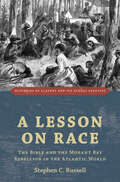
Stephen C. Russell tells the story of the Bible's role in Jamaica's 1865 Morant Bay rebellion and the international debates…
about race relations then occupying the Atlantic world. With the conclusion of the American Civil War and arguments about reconstruction underway, the Morant Bay rebellion seemed to serve as a cautionary tale about race relations. Through an interdisciplinary lens, the book demonstrates how those participating in the rebellion, and those who discussed it afterward, conceptualized events that transpired in a small town in rural Jamaica as a crucial instance that laid bare universal truths about race that could be applied to America. Russell argues that biblical slogans were used to encode competing claims about race relations. Letters, sermons, newspaper editorials, and legal depositions reveal a world in the grips of racial upheaval as everyone turned their attention to Jamaica. Intimately and accessibly told, the story draws readers into the private and public lives of the rebellion's heroes and villains.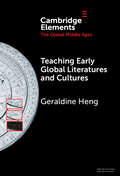
By Geraldine Heng. 2025
Teaching Early Global Literatures and Cultures is a guide to the terra incognita of the global literature classroom. It begins…
with a framing rationale for why it is valuable to teach early global literatures today; critically surveys the issues involved in such teaching; supplies details of some two dozen texts from which to build a possible syllabus; adds a comprehensive bibliography, and suggestions for student research and student involvement in co-creating course content; and furnishes detailed guidelines for how to teach some 10 texts. It should be possible for faculty and graduate instructors to take this Element and begin teaching its sample syllabus right away.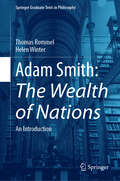
By Helen Winter, Thomas Rommel. 2025
This textbook provides an accessible introduction to Adam Smith, one of the most important economic thinkers. His seminal work The Wealth…
of Nations is a classic text in philosophy, social sciences and economics. This introduction puts Smith&’s central ideas on the division of labour, the invisible hand and the market into context. A careful analysis of key passages from Smith&’s writings explains how he arrived at a theory of society and the market that has become central to our understanding of human motives. The discussion of Smith&’s The Wealth of Nations is followed by sources from the 18th century that shaped Smith&’s analysis of human motives and propensities. This introduction is indispensable reading for an informed discussion of the mechanisms that govern human society. It provides an introduction to Adam Smith as one of the most astute thinkers of the 18th century, whose ideas shape modern concepts of the market, making it ideal as course material in courses such as economics, history, political sciences, sociology, literary studies, philosophy.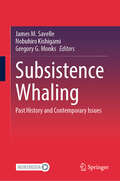
By Gregory G. Monks, Nobuhiro Kishigami, James M. Savelle. 2025
This book examines the past history, and contemporary status of subsistence whaling. The papers derive from a symposium ‘Aboriginal Whaling…
and Identity in the 21st Century’ held at the Eleventh Conference on Hunting and Gathering Societies in Vienna, Austria in September 2015. Whales, especially large baleen whales, are the largest animals targeted by many societies, prehistoric or modern, and major facets of subsistence, social structure and ideology are still deeply embedded in past and current whaling lifeways. Yet there is probably no other environmental/political issue that has attracted as much attention in the late 20th and early 21st century as whaling practices and policies. Accordingly, the papers address two major themes: 1) the extent and characteristics of major prehistoric and early historic whaling activities, and 2) case studies amongst modern whaling societies, and how these societies are impacted by current political and economic realities and by the anti-whaling movement.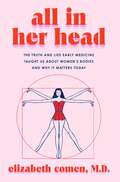
Finalist for the 2025 PEN/E.O. Wilson Literary Science Writing AwardUSA Today Bestseller“All in Her Head accomplishes a remarkable feat of storytelling.…
By combining essential medical histories about women’s bodies with all the narrative propulsion of a medical thriller, Comen has written a must-read, compelling, and important book.”—Siddhartha Mukherjee, Pulitzer Prize–winning author of The Emperor of All Maladies and The Song of the Cell“Wow! This book will upend everything you thought you knew about your body while empowering you to make better decisions moving forward. Through storytelling, extensive research, and easy recommendations, Dr. Elizabeth Comen has given us all a priceless road map to reclaim our agency.”—Eve Rodsky, author of Fair PlayA surprising, groundbreaking, and fiercely entertaining medical history that is both a collective narrative of women’s bodies and a call to action for a new conversation around women’s health.For as long as medicine has been a practice, women's bodies have been treated like objects to be practiced on: examined and ignored, idealized and sexualized, shamed, subjugated, mutilated, and dismissed. The history of women’s healthcare is a story in which women themselves have too often been voiceless—a narrative instead written from the perspective of men who styled themselves as authorities on the female of the species, yet uninformed by women’s own voices, thoughts, fears, pain and experiences. The result is a cultural and societal legacy that continues to shape the (mis)treatment and care of women.While the modern age has seen significant advancements in the medical field, the notion that female bodies are flawed inversions of the male ideal lingers on—as do the pervasive societal stigmas and lingering ignorance that shape women’s health and relationships with their own bodies.Memorial Sloan Kettering oncologist and medical historian Dr. Elizabeth Comen draws back the curtain on the collective medical history of women to reintroduce us to our whole bodies—how they work, the actual doctors and patients whose perspectives and experiences laid the foundation for today’s medical thought, and the many oversights that still remain unaddressed. With a physician’s knowledge and empathy, Dr. Comen follows the road map of the eleven organ systems to share unique and untold stories, drawing upon medical texts and journals, interviews with expert physicians, as well as her own experience treating thousands of women.Empowering women to better understand ourselves and advocate for care that prioritizes healthy and joyful lives— for us and generations to come—All in Her Head is written with humor, wisdom, and deep scientific and cultural insight. Eye-opening, sometimes enraging, yet always captivating, this shared memoir of women’s medical history is an essential contribution to a holistic understanding and much-needed reclaiming of women’s history and bodies.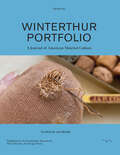
By Winterthur Portfolio. 2025
This is volume 59 issue 1 of Winterthur Portfolio. Winterthur Portfolio fosters knowledge of the North American past by publishing…
articles on material culture and the historical contexts within which artifacts developed. The journal presents interdisciplinary scholarship that critically engages art history, history, geography, ethnology, archaeology, anthropology, craft, design, and literature. It publishes articles that are analytical and synthetic rather than descriptive, and it encourages submissions by scholars underrepresented in material culture studies.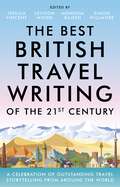
Travel writing mattersExplore the world through this beautiful collection of the finest travel writing published in British media in the…
21st century - as judged by some of the most respected travel writers in the world: Levison Wood, Monisha Rajesh, Jessica Vincent and Simon WillmoreThe world has changed, but our desire to explore new places remains as strong as ever. The Best British Travel Writing of the 21st Century includes 30 outstanding travel stories published in British media over the last two decades, as chosen by some of the top names in travel writing today. Through travel's most talented storytellers, you'll face adversity along the Congo's raging River Lulua, make new friends aboard Iraq's night train, and embark on life-changing pilgrimages from India to Saudi Arabia.This book is an ode to travel and all that it offers, but it's also a celebration of a genre that brings the world closer to us. At its best, travel writing encourages empathy and inspires change. Join our award-winning writers in marvelling at the power and beauty of travel, and let them inspire you to fall in love with the world all over again.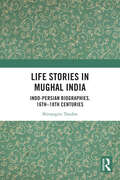
By Shivangini Tandon. 2025
Situated at the intersections between history and literature, the book explores the life-stories written in the Mughal period to recover…
socio-cultural developments in the period. It focuses on the genre of life-stories and looks at the complex interactions between agency and the ruling structure in shaping historical formations.The biographical dictionaries explored in this book highlight the significance of the agency of political actors, and the strategies through which the aristocrats and the elites reproduced the political system. At the same time, these texts are also quite helpful in recovering processes through which the ordinary people, in routine, everyday forms negotiated with and contested the political system. Delving into the life-narratives preserved in the tazkiras or biographical compendia, this book looks at the household as a political formation and positions the aristocratic households as integral to the reproduction of imperial sovereignty. The work also delves into the world of emotions and argues for the need to draw linkages between political developments and shifts in emotions and affect.This book will be an essential resource for scholars and researchers of history especially early modern history, cultural studies, literature, sociology, South Asian history. It will also be of interest to those studying gender and political discourse in early modern South Asia.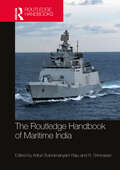
By R. Srinivasan, Adluri Subramanyam Raju. 2025
This handbook provides a comprehensive study of India’s maritime heritage. It presents perspectives on India’s maritime history, territorial concerns, bilateral…
and multilateral engagements, traditional and non-traditional threats, maritime management and development, as well as climate change and its implications. The volume brings together accomplished academicians and practitioners who, through multidisciplinary and analytical methodologies, examine the concerns and challenges India faces at present or might face in the immediate future, focusing on crucial actors, policies and new developments. In doing so, the handbook provides an invaluable and pragmatic understanding of and solutions to India’s maritime needs.This volume is an indispensable resource for scholars, teachers and researchers of political science, international relations, South Asian studies, South Asian politics, history, defence and strategic studies, foreign policy, maritime strategy and security.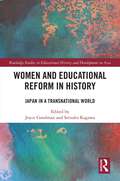
By Joyce Goodman, Setsuko Kagawa. 2025
This unique collection provides critical analyses of Japanese educational history by bringing together gender, transnational, and transcultural perspectives.It illustrates how…
Japanese, European, and American women educators transcended national borders in seeking to reform and re-shape Japanese education and society in the midst of social and political change from the Meiji era (1868-1912) to 1948 and beyond, including during the American Occupation of Japan. It demonstrates how educational practice from Europe and the United States not only flowed into Japan before and after the First and Second World Wars but also became entangled with Japanese perspectives, as well as with nationalism, colonialism, imperialism, and regionalism, as some Japanese educators sought to reform education for Asian women beyond Japan’s borders. In an increasingly connected world, where, at the same time, opportunities for women’s education in some countries are declining, the volume provides insights for readers into how women educators have co-operated historically across national borders in pursuit of reform in education and society in periods of immense social and political change, including at moments when nationalism and imperialism were in the ascendancy.This volume will be of interest to academics, researchers, and post graduate students in the fields of Japanese history, history of Japanese education, Japanese women’s history, gender perspectives, and transnational and transcultural research. It will also be of interest to readers curious about the history of Asia more broadly.